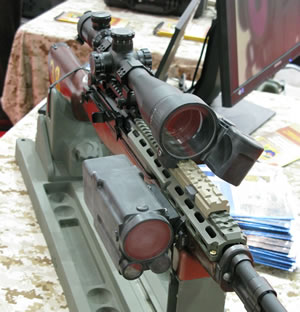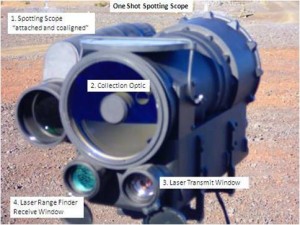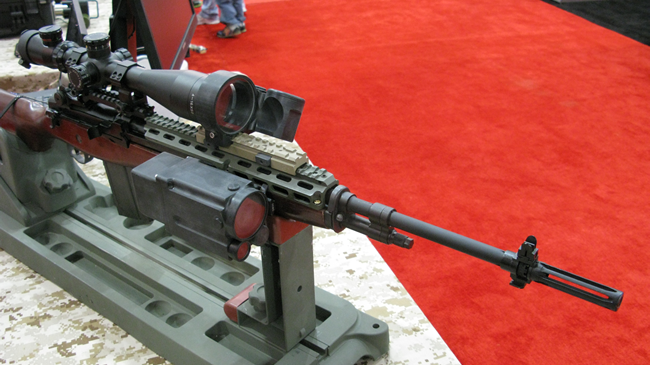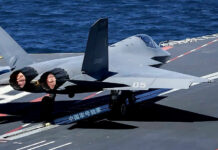
Snipers have become a determining factor in asymmetric combat, for their capability to gain measured and surgical effects with minimum collateral risk. However, where snipers are called to engage targets at extended ranges (1-2 km), their capability to get ‘one shot – one kill’ is eroded. Training, weapon improvement or optics cannot bridge this gap.
Military snipers may only get one chance to hit their target. The One Shot program seeks to enable snipers to accurately hit targets with the first round, under crosswind conditions, day or night, at the maximum effective range of the weapon. A commercial system providing similar capabilities (tough not as advanced in down-range measurement as the DARPA system) was unveiled by TrackingPoint at the Shot Show 2013.
DARPA has demonstrated that an integrated approach that corrects the major causes for error, can improve sniper performance dramatically, when used as an integrated, ergonomically engineered system. The program began n 2007 and has currently reached an advanced stage with size, weight and power reduced into a man-portable sized systems.
One Shot XG developed by Cubic Defense Applications under a $6 million DARPA contract incorporates lessons learned and the user input received during the program developmental testing cycles. Integrated on the sniper scope, or the observer’s telescope for conventional two-man operation, DARPA’s One Shot XG system aims to increase the first round hit probability of the sniper team, thus reducing target engagement time by reducing the number of rounds spent to score the first hit. The system is also designed for application on the sniper’s scope, for individual use. One Shot XG accurately measures the range to the target, the atmospheric and geodetic conditions and the crosswind velocity down range utilizing an invisible laser beam. Calculating all this data into a ballistic solution, One Shot displays a corrected aim point on the sniper scope’s reticule. The system has demonstrated 400 percent improvement in first hit probability and reduced rounds to first hit by 230 percent. Overall, engagement time has been reduced by 35 percent.

Through the development since 2007 the system’s weight has been reduced from 5.7 kg day-only solution for a two-man team to 1.4 kg day/night system operated by a single sniper. The system’s volume has also diminished from 8.6 litres to 1.2 litres.
The new version – One Shot XG represents the next-generation of the system. The program should complete Phase 2E in spring 2013, which will reduce system size, weight and power and extend the engagement range. The Phase 2E system will mount on a conventional spotting scope, and prototypes are expected to be available for field evaluation in spring 2013. The Marine Corps Warfighting Lab expects to get the first eight XG systems in December 2013 to proceed with test firing and user evaluation.
This next-generation One Shot envisions a compact observation, measurement, and ballistic calculation system mountable on either the weapon or spotting scope. If proven successful, One Shot XG would lead to limited rate production with the military services taking on the requirement and acquisition role for future procurement.
One Sot XG developer Cubic previously received DARPA funding to develop a two-way optical communication system called the dynamical optical tags (DOTs), that led to the delivery of retro reflection tags and laser interrogators. Cubic is currently a subcontractor to prime contractor Teledyne for the EXACTO guided .50 caliber bullet, another DARPA program. System-level live fire testing of the EXACTO technology were scheduled for late 2012.

















